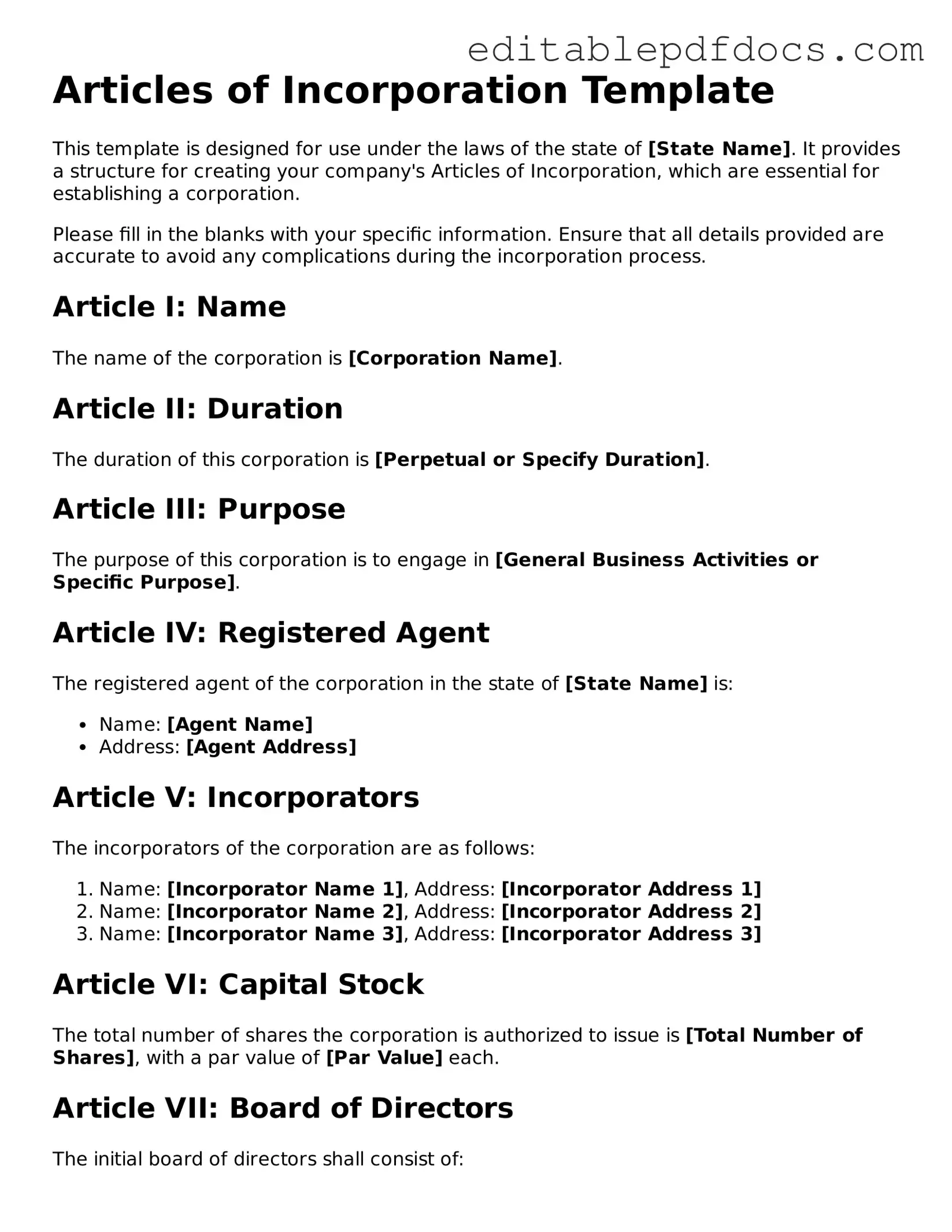Free Articles of Incorporation Document
The Articles of Incorporation form is a crucial document that establishes a corporation's existence in the eyes of the law. This form outlines essential information about the company, including its name, purpose, and structure. Understanding how to properly fill out this form is vital for anyone looking to start a business and ensure compliance with state regulations.
Ready to take the next step in your business journey? Click the button below to fill out the Articles of Incorporation form!
Open Editor Now
